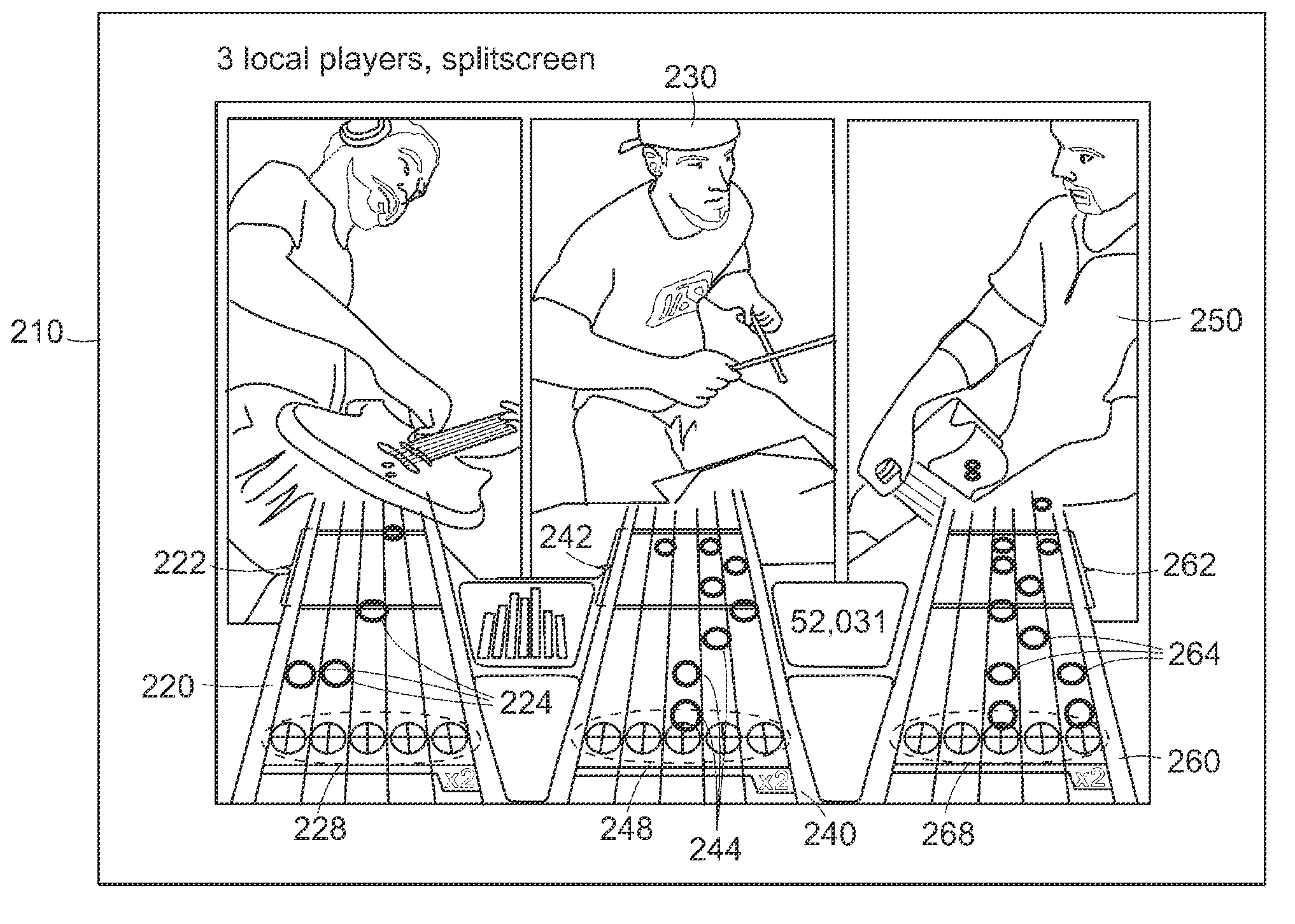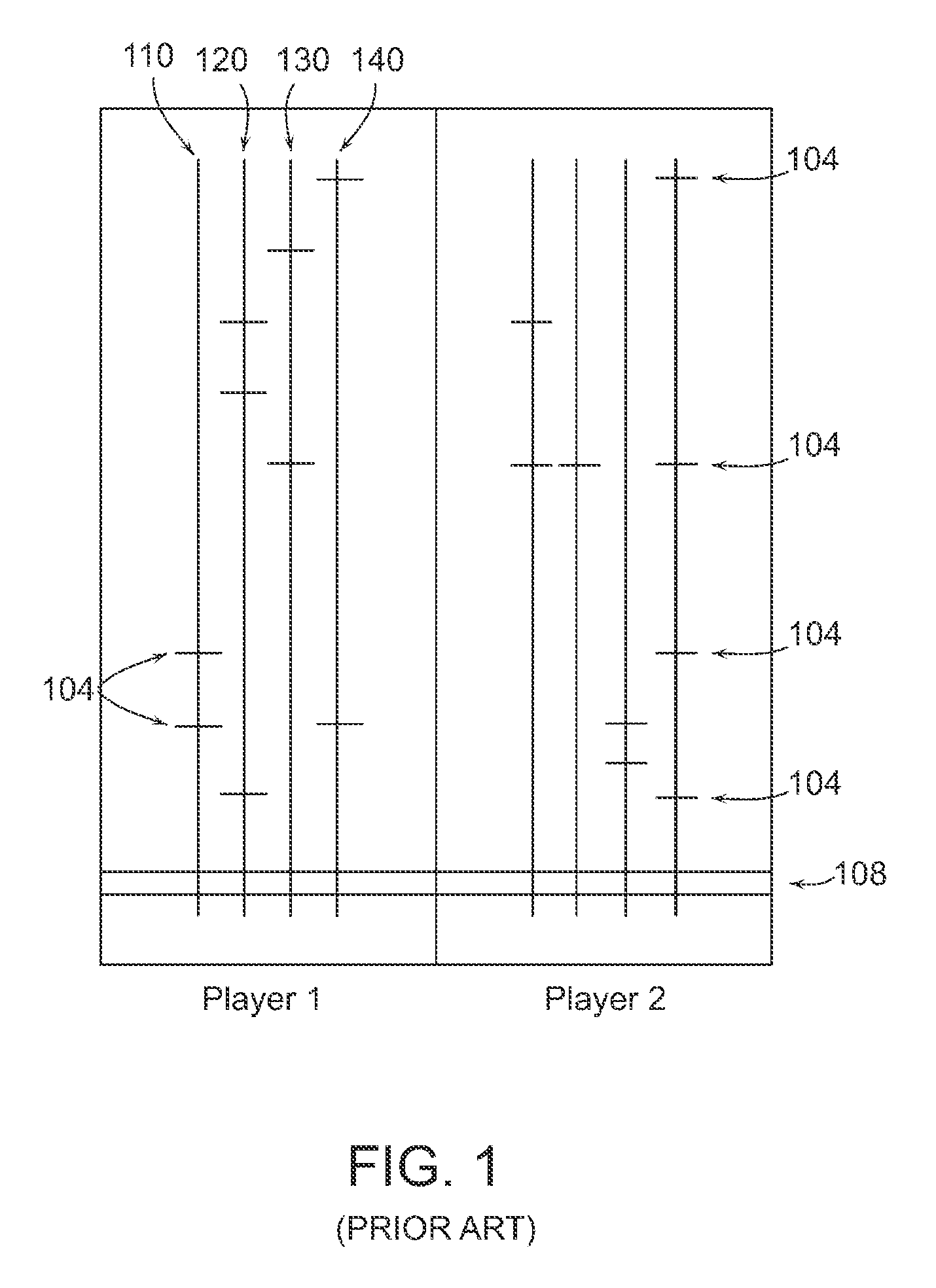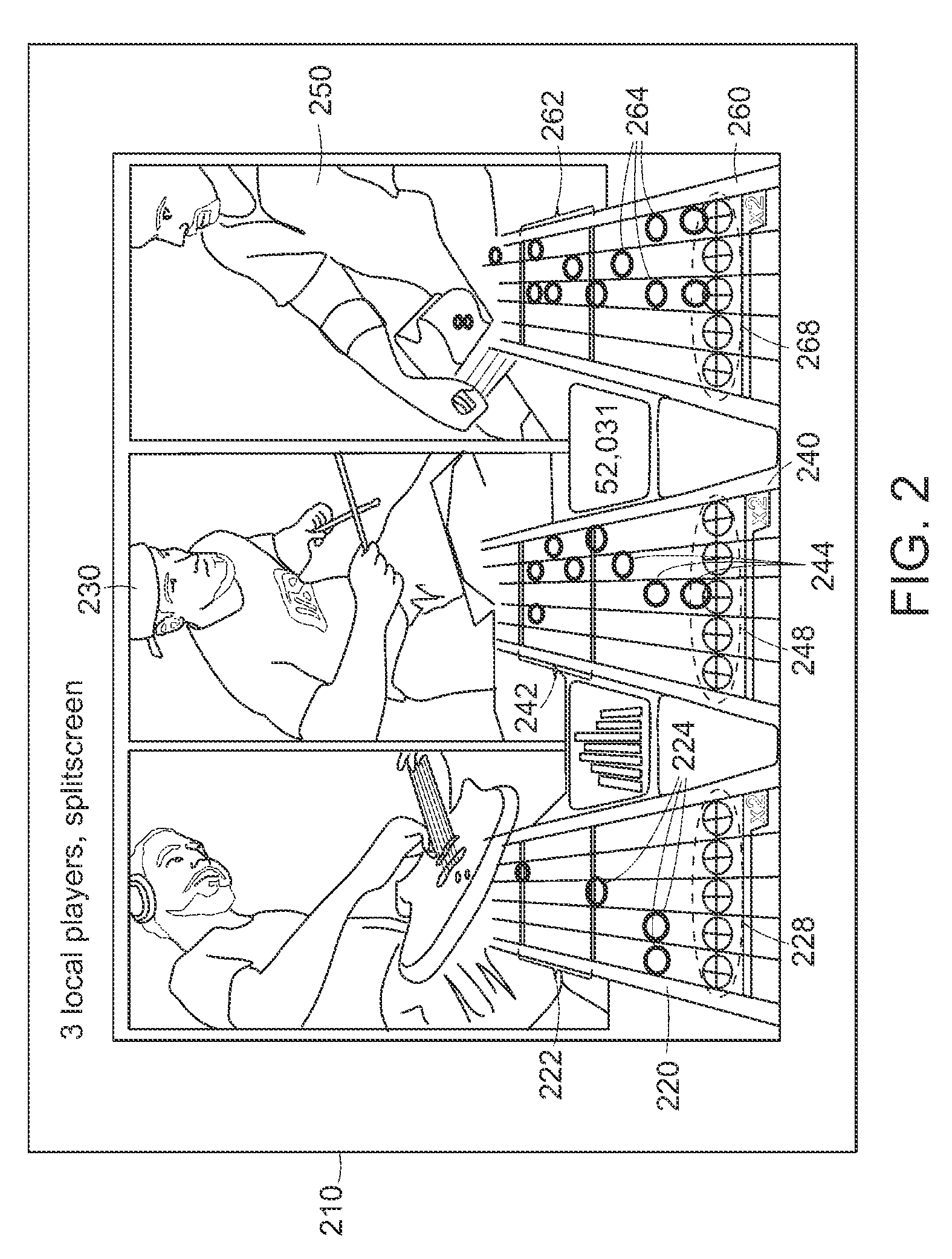Method and apparatus for providing a simulated band experience including online interaction
a band experience and online interaction technology, applied in the field of video games, can solve the problems of imposing a significant engineering and design burden on video game developers, impede the musician's ability to use the instrument, score poorly and lose the game, etc., and achieve the effect of facilitating real-time interaction
- Summary
- Abstract
- Description
- Claims
- Application Information
AI Technical Summary
Benefits of technology
Problems solved by technology
Method used
Image
Examples
Embodiment Construction
[0019]Referring now to FIG. 2, an embodiment of a screen display for a video game in which three players emulate a musical performance is shown. Each player is represented on screen by an avatar 210, 230, 250. Although FIG. 2 depicts an embodiment in which three players participate, any number of players may participate simultaneously. For example, a fourth player may join the game as a keyboard player. In this case, the screen would be further subdivided to make room to display a fourth avatar. In some embodiments, the avatar 210, 230, 250 may be a computer-generated image. In other embodiments, the avatar may be a digital image, such as a video capture of a person. The avatar may be modeled on a famous figure or, in some embodiments, the avatar may be modeled on the game player associated with the avatar. As shown in FIG. 2, each avatar 210, 230, 250 associated with a player is associated with a “lane”220, 240, 260 that appears to be three-dimensional, that is, it appears to lie i...
PUM
 Login to View More
Login to View More Abstract
Description
Claims
Application Information
 Login to View More
Login to View More - R&D
- Intellectual Property
- Life Sciences
- Materials
- Tech Scout
- Unparalleled Data Quality
- Higher Quality Content
- 60% Fewer Hallucinations
Browse by: Latest US Patents, China's latest patents, Technical Efficacy Thesaurus, Application Domain, Technology Topic, Popular Technical Reports.
© 2025 PatSnap. All rights reserved.Legal|Privacy policy|Modern Slavery Act Transparency Statement|Sitemap|About US| Contact US: help@patsnap.com



